Most people say no to waxing, I say yes to the quick method….here is why
David wrote to me asking “what is the best value per watt equipment change I can make?”
If it’s a trick QQ, and the answer is probably tyre pressure or position on the bike as these are free!….. but assuming it’s a product to purchase then the answer is surely chain wax and waxing your chain…..at <$1 per watt for 1 year of gains its incredible value….and you can get almost all the gains in 15mins of effort (or 3hr across the entire year).
Chain waxing is not new, but it never really caught on. Ask around. 99% have never heard of it, and of the remainder 99% dont do it. I estimate only 1 in 1000 cyclists wax their chain with an immersion method, but I do it about once per month. That’s weird! And the gains, on the back of an envelope
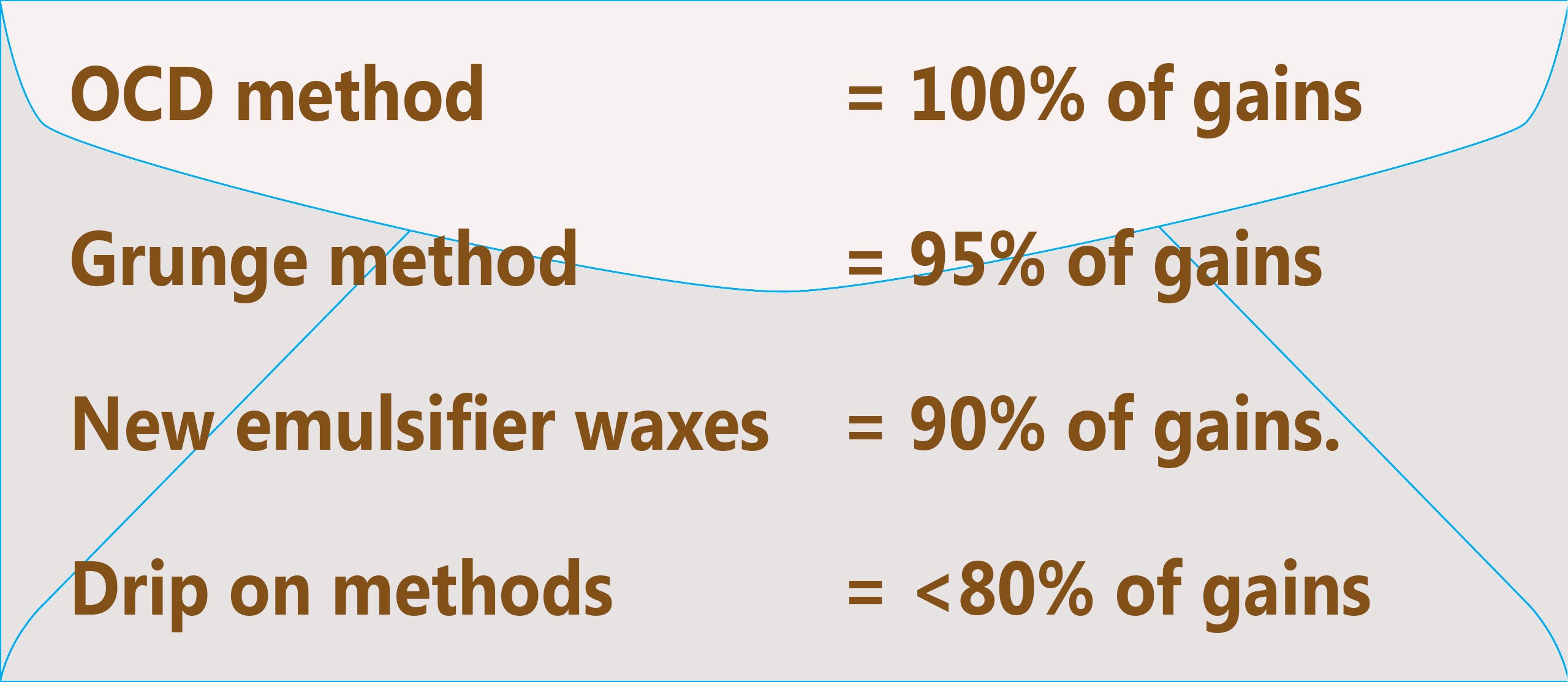
Survey of Habits
In a survey of 400 regular cyclists and subscribers you guys told me….
11% said waxing probably doesn’t work
60% said it’s too much of a headache
29% claimed they waxed their chain regularly!

What is the Grunge Method?
This is a quick clean and quick wax without the super-additives and without the ultrasonic cleaner.
All you need is four things:
1. degreaser 2. chain tool / quick link 3. wax heater 4. wax
And it only takes 4 steps
1. remove the chain 2. degrease/clean the chain (2x-4x) 3. wax the chain via immersion 4. reapply the chain & clean up
And you can do this in 15mins, I made a video to prove it, and did it twice to make sure!
Science of Wax Savings
At a cadence of 90 rpm there are around 30,000 link movements a minute, each movement containing six distinct metal on metal surfaces requiring lubrication.So that 180,000 grinding metal interfaces per minute! You chain will wear and stretch with time but the effect is much less after waxing:
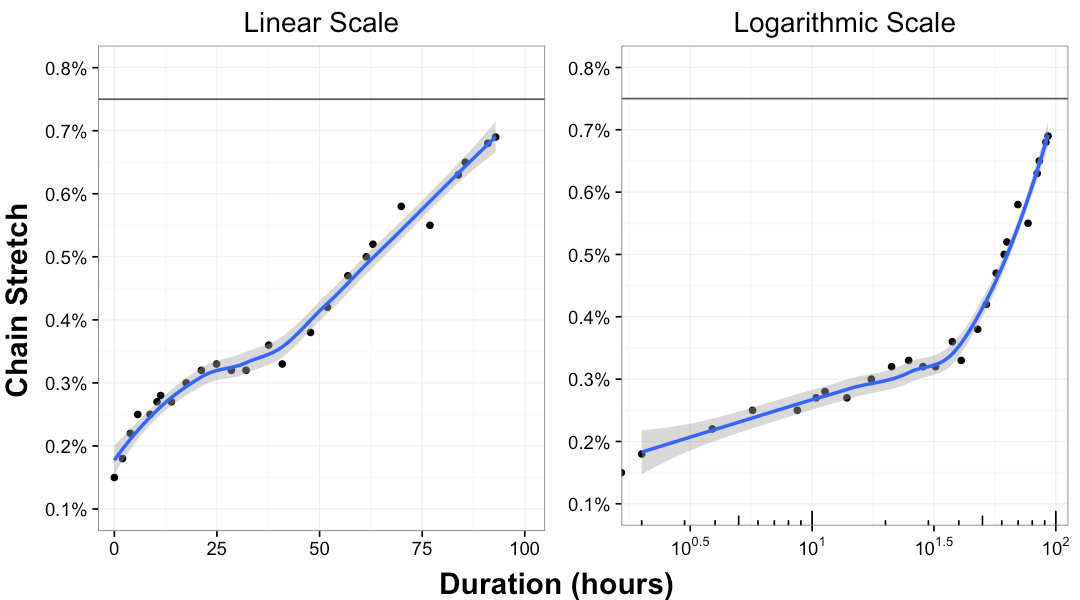

It’s impossible to ride in sterile conditions, and dirt quickly gets into the chain, deep inside into every link. Wiping the outside is not going to cut it. Those strap on chain cleaners are not going to get it either. They basically give the illusion of cleanliness whilst leaving at the deep dirt inside!

This ingressed dirt forms an excellent grinding paste which gradually erodes and weakens the chain so that microscopic gaps appear, allowing more dirt and “stretching the chain”.
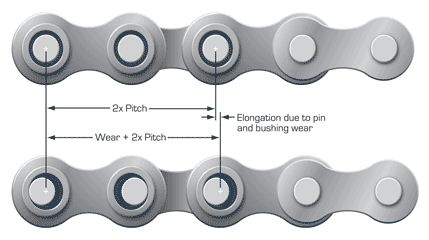
Chain Quality
Chain quality does make a difference. It is determined by material and manufacturing. A lower grade of steel or different levels of hardening is one factor. Coatings also have an influence….low friction coatings are seen on Shimano 105, Ultegra and Dura-Ace chains offering an increasing number of coated parts. But coatings (eg KMC’s Diamond Like Coating) applied after the chain is assembled have a modest effect and are usually cosmetic. Of course weight also plays a factor in the price of a chain. Premium chains from most brands feature slotted (or drilled) plates and hollow pins with tapered ends for weight savings.

How did the chains perform? As it turns out, there was a wide range in the duration it took for each chain to reach 1-percent elongation. The Connex 11sX chain with stainless-steel inner links took 187 hours of continuous running, while KMC’s X11SL DLC hit that mark after 41 hours on the machine. So this means that the Connex 11sX will cost around 25c per hour but the KMC X11SL nearly $2 /hr!

Chain Life Improves with Waxing
Don’t confuse lube or wax life with chain life. Your chain will always wear out but yes it depends how you treat it and how bad your conditions….worst case 2000km (for 0.5% wear) best case 200,000k. But to get those numbers you have to be scrupulous clean, I am talking about cleaning after EVERY DIRTY RIDE (non-immersive) or EVERY 400k (immersive)
So a clean chain waxed chain can easily bang out up to 60,000km before needing replacement, whereas a normal chain with regular lubricant will grind out 6,000km at best. That’s typically 1 year or riding vs 10 years of riding!!
You can go deep into chain wear stats but I can save you the headache of working this out here: fft.tips/chain
Chain Lube Quality

OK lets focus on chain lube and I am going say at the start: immersion waxing is & remains the gold standard.
You probably saw it a lot of times by now, with methods getting ever more complicated, more and more cleaning stages, more and more fancy waxes, with more and more additives. For example adding Molybdenum disulfide, Tungsten DiSulfide, Teflon (Polytetrafluoroethylene (PTFE).
Whilst it is true these are low friction additives, I am not convinced they make a big difference to the chain friction. I have certainly never seen the evidence of chain friction with wax and with wax and additive.
As a result I have been leaving these out of the mix, and I have yet to find any appreciable difference. So whilst they may contribute 0.1 to 0.3w to the savings, I am happy to grab the big gains for the sake of time. Think about this:
You could have the perfect chain method, multiple stages, multiple additives but you might never use it. A perfect but unused method is by definition useless.
Drip-On Chain Lube Compared
Everyone knows frictionfacts did a lot of testing and most of it is believable before their acquisition by ceramicspeed. This table is *AFTER* their acquisition:

Lube Life: Zero Friction Cycling
Fortunately, Adam Kerin of ZeroFriction Cycling did this independently . He measured the wear (and friction) of common lubes and the result were as as follows:
- the best saving is MSW immersion (but it wears off fast)
- the best drip is CS UFO (but it wears off fast and is expensive)
- Squirt is a fair runner up with decent life
- Absoluteblack GrapheLube is very promising…..

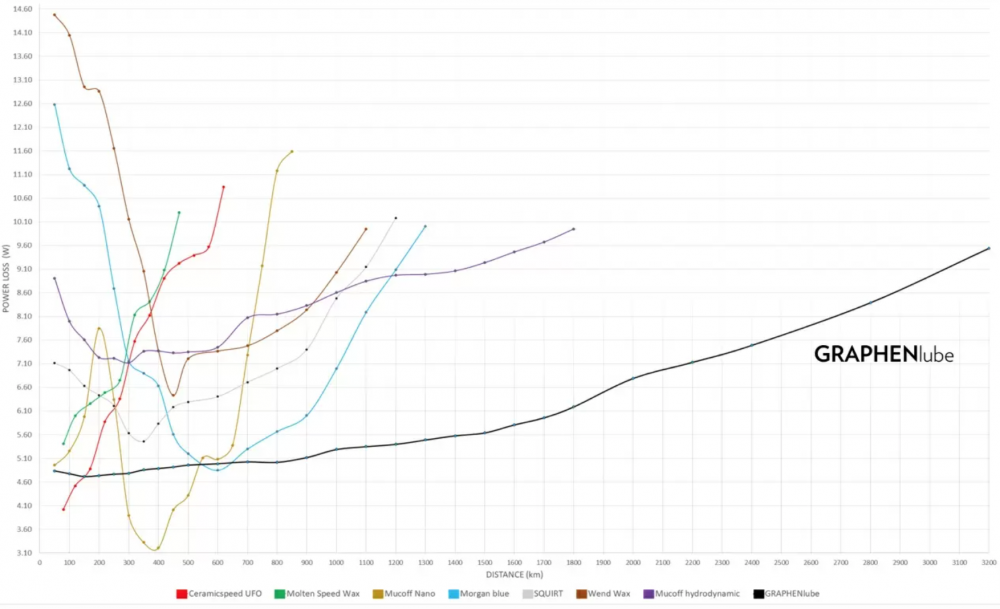
Cost per ml vs Cost per Watt vs Cost per Watt-Year
If you just compare the costs of the top lubes/waxes then it looks like this….GraphenLube is super-expensive and MSW super cheap.
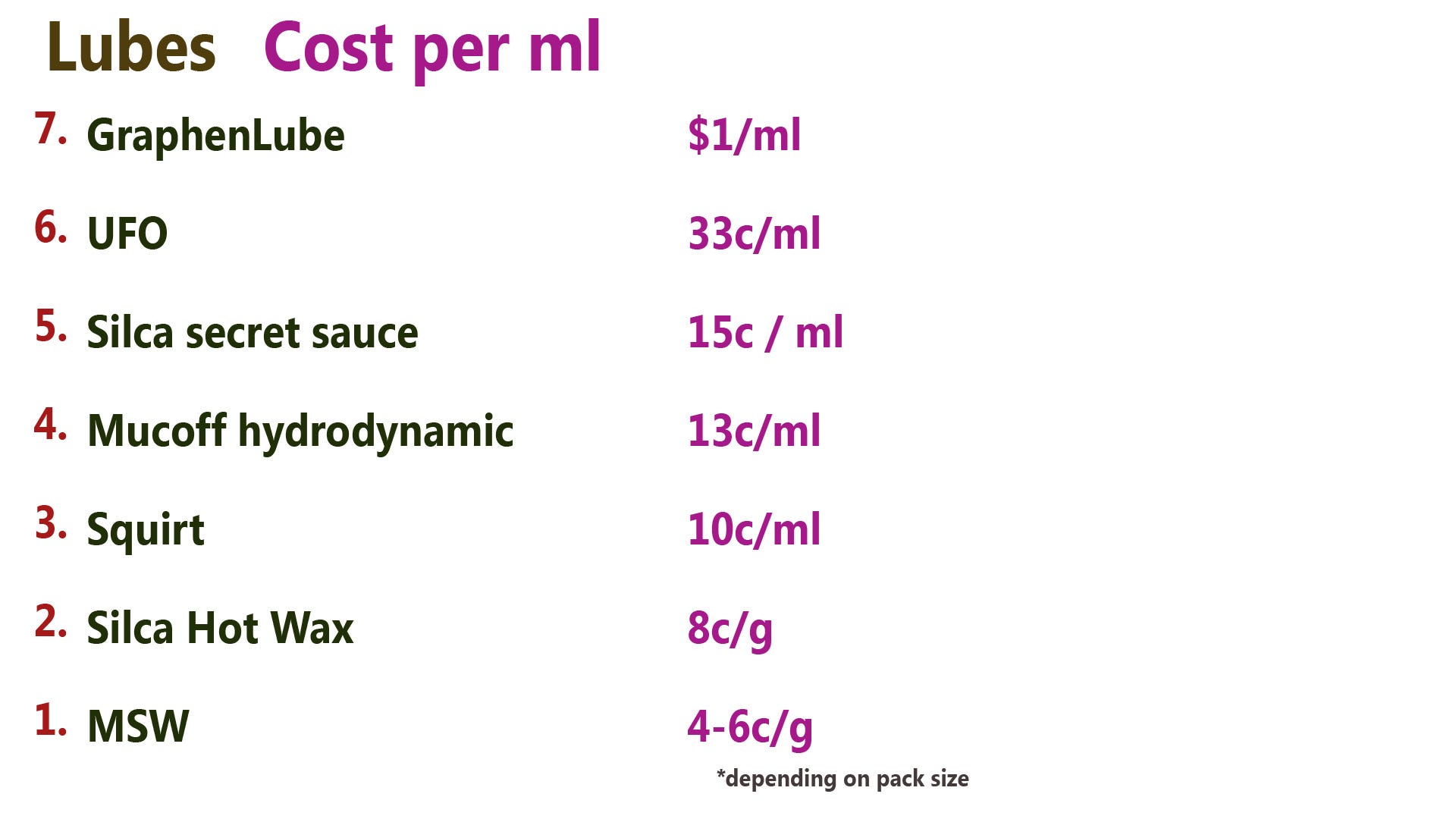
But you should be asking what is the cost per watt saved, we can reorder and voila….now its Squirt that is most costly and MSW super cheap.
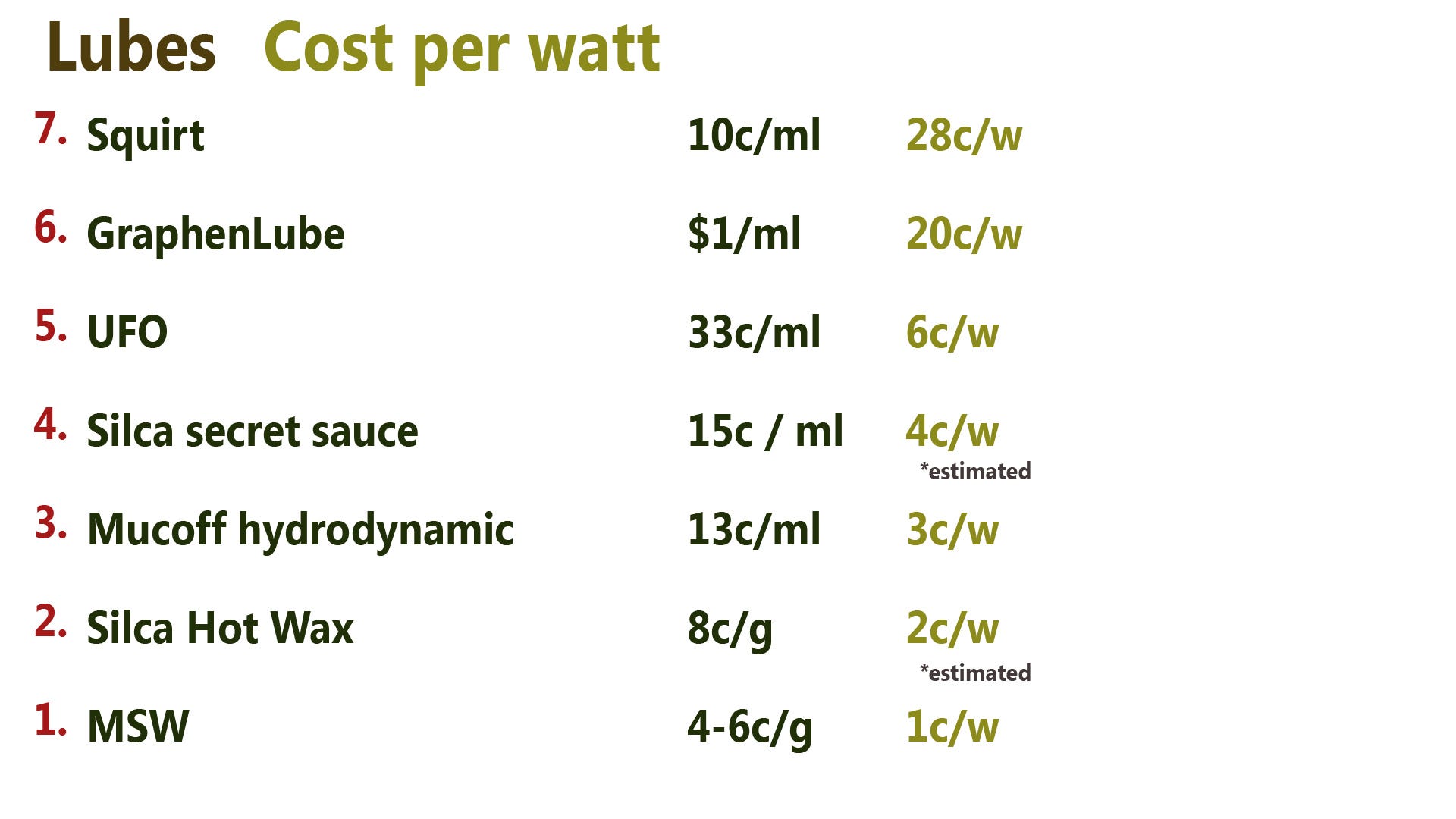
But to really bring this home, lets add in life of the lube on the chain (on average) and then we get the final ranking of lube cost per watt year of savings. The immersion waxes come out on top but GraphenLube doesn’t look quite as bad after all.

Conclusions
Chain lubes are as much about cleaning as they are about clever additives
If you want to use a drip-on product, I would advise you to clean your chain at least once per week (eg 100k) and you will get about 80% gains in terms of chain life and friction
If you want to use a wax immersion , I would advise you to clean your chain at least every 400k using our grunge method and you will get about 95% gains in terms of chain life and friction
Molton Speed Wax remains the best product per watt year but the latest drip-waxes are not too far behind
So ironically in these post-coronavirus times we discover cleaning is as important as the lube itself, yes this is where most of us go wrong!


After 40 years, I tried the full-frontal wax lube: clean with three solvents, dipped in hot moly-parafin wax. I followed the Oz-Cycle method. It didn’t last long. Now, I got to be honest, I am riding a fixie with PC-10 chain, and a fixed wheel chain is probably getting way more wear than a derailleur chain per mile.
Wet lube works well, but attracts a lot of dirt and is messy. I have ended up using drip-wax every 50 miles or so. This keeps the chain clean and dry, and quiet!
If immersion waxing I find cleaning is actually best done with boiling water. Just take chain off put into mesh basket. Pour over boiling water from kettle. Taking care to the over and do both sides. 99% clean. Same with cassette. Use a small bottle brush.
I have been waxing for 6 months on my mtb and find that I need to redo every 100 to 150 miles, or approx 3 weeks. Yes it requires effort but no more filthy drive train.